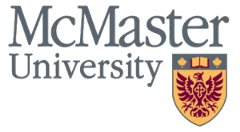After months of the COVID-19 pandemic, there is hope on the horizon with the approval and start of the roll-out of several vaccines. The roll-out of the COVID-19 vaccines is arguably one of the largest health-system initiatives ever conducted. While health systems are used to running vaccination campaigns, the global COVID-19 pandemic raises many challenges. For example, research knowledge is still evolving about the virus (and new variants), there is still a push to develop and approve new vaccines, and there is a limited supply of vaccine doses. Making the situation even more challenging, some groups are expressing strong resistance to the COVID-19 vaccines which can lead to hesitancy to get vaccinated among many others due to a lack of information, mis-information or conspiracy theories.
To help Canadian decision-makers as they respond to unprecedented challenges related to the pandemic, the COVID-19 Evidence Network to support Decision-making (COVID-END) has reviewed what is known about the COVID-19 vaccine roll-out.(1) More specifically, they examined what is known about five key domains:
- securing and distributing a reliable supply of vaccines and necessary equipment (for example, needles and diluents);
- allocating vaccines and necessary equipment equitably;
- communicating how the vaccines will be allocated and the safety and effectiveness of vaccines;
- administering vaccines in ways that optimize timely uptake; and
- monitoring, evaluating and reporting on the vaccine roll-out.
This blog post is the first in a series which examine evidence and experiences from Canada and other countries about the COVID-19 vaccine roll-out.
What the research tells us
The first set of challenges facing decision-makers have been to secure and distribute a reliable supply of vaccines and other necessary equipment. This includes planning for the following:
- national purchasing agreements with vaccine developers to secure doses as they become available;
- delivery of the vaccines and equipment to the country;
- managing the inventory of vaccines within the country;
- ordering within country;
- distribution within the country and to administration sites (including whether directly from centralized distributors to administering locations and whether redistribution is allowed); and
- storage and handling within country (for example, cold-chain requirements to maintain optimal conditions during the transport, storage, and handling of vaccines).(1)
The World Health Organization (WHO) and leading national agencies like the U.S. Centers for Disease Control and Prevention (CDC) have developed guidelines related to the purchasing of vaccines and other supplies, as well as planning mass-vaccination campaigns.(2-3) Such guidelines are intended to support all countries in preparing and building readiness for the deployment of COVID-19 vaccines.
Research shows that to end the COVID-19 pandemic, it is crucial to act globally. It is estimated that 60-80% of the world’s population must be vaccinated to achieve “herd immunity” for COVID-19.(4) According to the Mayo Clinic, herd immunity (sometimes referred as community immunity) occurs when a large portion of a community (the herd) becomes immune to a disease, which makes the spread of the disease from person to person unlikely. As a result, the whole community becomes protected (and not just those who are immune).(5) Therefore, there have been calls for international institutions, governments and vaccine manufacturers to plan for sufficient vaccine production and allocation, and negotiate vaccine prices that will be affordable for low- and middle-income countries.(5)
The need to share COVID-19 vaccines globally in a more equitable way appears particularly challenging since high-income countries have secured more than half of the vaccine doses so far.(6) High-income countries have finalized advance purchasing agreements with vaccine developers to secure doses as they become available (in many occasions with multiple companies that have developed or are currently developing COVID-19 vaccines). For instance, Canada established advance purchasing agreements with seven companies that have developed or are currently developing COVID-19 vaccines. The doses secured are enough for all Canadians who wish to be vaccinated. But other countries like Germany, the United Kingdom and the United States have also re-purposed existing capacity and invested in new vaccine manufacturing capacity to help expedite the production of vaccines.
Given the potential complexity of delivering COVID-19 vaccines to remote communities in both developed and developing countries, national and international vaccine supply chains should be strengthened. This will ensure that vaccines are distributed and administered efficiently to remote and rural populations, and to avoid any waste of vaccine doses.(4)
And other challenges will most likely be revealed as the mass-vaccination campaigns unfold. In the second part of our series, we will examine the challenges of allocating vaccines and necessary equipment equitably (with a particular focus on deciding which populations should be prioritized).






